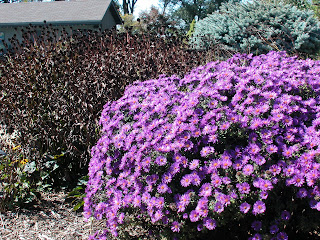
"JAPANESE GARDENS Nancy Marshall, Small's Landscaping310 N 325 E, Ste A, Valparaiso, Ind.219.476.7400The Japanese garden has long been known for its sense of serenity-a place to contemplate, to have "down time" of the mind. Nancy Marshall lists some of the plants and other items that can be used to create a scenic, peaceful Japanese garden.Japanese maples are a great beginning for a Japanese garden. There are upright Japanese maples such as 'Emperor 1', whose leaves come out red in the spring and stay red throughout the entire summer, turning a brilliant red in the fall. The 'Lion's-head' Japanese maple is a very slow-growing upright maple with tight, slightly curly leaves. The 'Dissectum' Japanese maple has very cut leaves and is horizontal to weeping. The 'Crimson Queen' is a favorite. Weeping over a waterfall or large, moss-covered boulder, they shout Japanese garden!Bonsai pom pom evergreens are another impressive addition to the Japanese garden. After years of trimming they are stunted back and require trimming only once a year.Japanese Irises have huge flowers in a large color selection. They can be planted in water or not, and bloom after the Siberian or bearded iris. Their foliage stays upright and beautiful all summer long. The variegated Japanese iris is known for its multicolor foliage, also.Azaleas and ground covers have a place in most Japanese gardens. Azaleas give color in the spring, with the flowers and foliage changing color in the fall. My favorite azaleas are 'Herbert' (purple) and 'Pleasant White'. There are many ground covers such as creeping red thyme, Lysimachia Aurea, sapanaria, and Sagina Irish moss.Some grasses I would recommend are the Calamagrostis 'Karl Foerster', or feather reed grass. It stands very erect and is a cool-weather grass, meaning it will be about 3 to 4 feet tall by June. It is a great grass to enclose an area or to accent a specimen pom pom or other plant in front of it. Another striking grass is the dwarf Hakonechloa aureola. It is only about 12 to 18 inches tall, and droops with golden foliage. It will also grow in some shade. Great for a splash of color.Other great plants to use are weeping, 'Sargent', 'Jeddeloh' and 'Gentsch Hemlocks', 'Hinoki', 'Gold Thread', 'Fernspray Gold Cypress' and parviflora pine.Moss Boulders are sandstone boulders with moss or lichen growing on them. These would be used for the pond and waterfall features and individual boulders to accent plantings. Large, flat ledge rock pieces are used for bridges over streams. The boulder colors are soft brown, peach and mossy. I have made them into water rocks by drilling holes into them, usually four per boulder, installing a liner and pump under them and filling it entirely with stones, so that the water flows out of the separate holes and splashes onto the rocks below. There is no pond, but you still can enjoy the noise of the water.Some non-natural accents you can include are bridges made of stone, lanterns carved from granite, or pergolas with an oriental flare to them. There are also fencing, gates and stone paths that can give the garden a more oriental feel. But much care has to be taken when using any of these, as to the personality of the garden you are trying to achieve. It must not be forced into the garden if it will not "fit.""



























